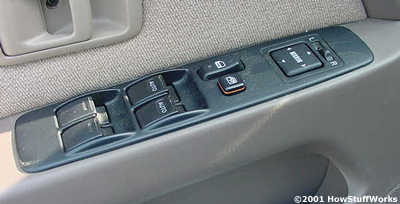Smart Sensors
Clusters are now being used on a smaller scale for sensors. For instance, a traditional pressure sensor contains a device that outputs a varying voltage depending on the pressure applied to the device. Usually, the voltage output is not linear, depends on the temperature and is a low-level voltage that requires amplification.
Some sensor manufacturers are providing a smart sensor that is integrated with all the electronics, along with a microprocessor that enables it to read the voltage, calibrates it using temperature-compensation curves and digitally outputs the pressure onto the communications bus.
This saves the carmaker from having to know all the dirty details of the sensor, and saves processing power in the module, which otherwise would have to do these calculations. It makes the supplier, who is most up on the details of the sensor anyway, responsible for providing an accurate reading.
Another advantage of the smart sensor is that the digital signal traveling over the communications bus is less susceptible to electrical noise. An analog voltage traveling through a wire can pick up extra voltage when it passes certain electrical components, or even from overhead power lines.
Communication buses and microprocessors also help simplify the wiring through multiplexing. Let’s take a closer look at how they do this.
Simplified Wiring
Multiplexing is a technique that can simplify the wiring in a car. In older cars, the wires from each switch run to the device they power. With more and more devices at the driver’s command each year, multiplexing is necessary to keep the wiring from getting out of control. In a multiplexed system, a module containing at least one microprocessor consolidates inputs and outputs for an area of the car. For instance, cars that have lots of controls on the door may have a driver’s-door module. Some cars have power-window, power-mirror, power-lock and even power-seat controls on the door. It would be impractical to run the thick bundle of wires that would come from a system like this out of the door. Instead, the driver’s-door module monitors all of the switches.
Here’s how it works: If the driver presses his window switch, the door module closes a relay that provides power to the window motor. If the driver presses the switch to adjust the passenger-side mirror, the driver’s door module sends a packet of data onto the communication bus of the car. This packet tells a different module to energize one of the power-mirror motors. In this way, most of the signals that leave the driver’s door are consolidated onto the two wires that form the communication bus.

How Car Computers Work: Smart Sensors and Simplified Wiring
by
Tags:

Leave a Reply